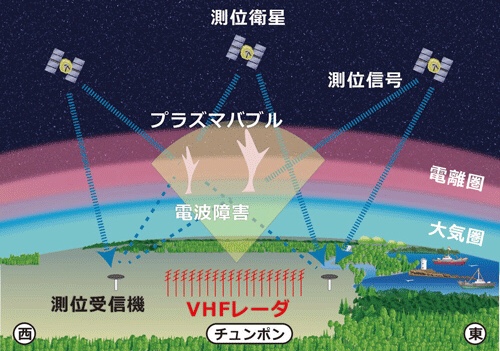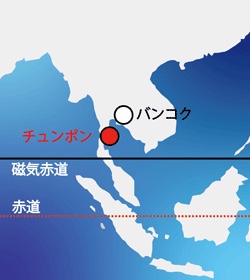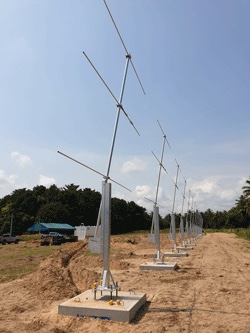


NICT: Installed Plasma Bubble Observation Radar: Thailand / Chumphon, KMITL
NICT: International Civil Aviation Organization (ICAO)
On November 7, 2019 (Thursday), the International Civil Aviation Organization (ICAO) launched a global space weather information service.
NICT, as a member of the center, provides information on communications, satellite positioning, and radiation exposure.
Already, NICT has been delivering the “Space Weather Forecast” every day since 1988.
Disturbed ionosphere: Plasma bubbles cause
“Increasing errors in satellite positioning caused by disturbances in the ionosphere” has become a problem.
The cause of the disturbance in the ionosphere is “plasma bubbles” that occur around the equator (magnetic equator) of the Earth’s magnetic field.
In the vicinity of a plasma bubble, “plasma bubbles” reduce the accuracy of satellite positioning.
Plasma bubble observation radar: (See Fig. 1)
Plasma bubbles cause positioning errors not only in low latitudes, but also in Japan located in the middle latitudes.
It has been strongly desired in recent years to continuously observe and predict the occurrence of plasma bubbles.
This time, NICT and KMITL have set up a radar for plasma bubble observation at the KMITL Chumphon campus.
Operation will start on Friday, January 17, 2020.
Thailand / Chumphon: (See Figure 2)
Chumphon is close to the magnetic equator and can catch the situation immediately after its occurrence.
This is the best place to install a radar for observing plasma bubbles.
Plasma bubble observation radar: Functional specifications (see Fig. 3)
The radars are installed at equal intervals on a 90 m east-west site
A radar system consisting of 18 antennas.
Uses radio waves in the VHF band (39.65 MHz).
Radio waves emitted from radar are reflected by irregular shapes created by ionospheric plasma bubbles.
By observing the returning radio waves, the position and velocity of the plasma bubble can be determined.
By installing this radar, it is possible to observe plasma bubbles constantly.
Contribute to expanding the use of high-accuracy positioning using artificial satellites in Southeast Asia, agriculture and construction.
NICT-National Institute of Information and Communications Technology